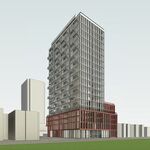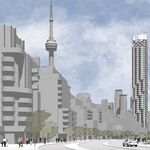Ontario Reaches Major Milestone on Bradford Bypass Construction
Province issues Request for Proposals for detail design of central and east sections
January 28, 2025
Transportation
Table of Contents
- Content
- Quick Facts
- Related Topics
BRADFORD — The Ontario government has marked an important milestone as the province continues building the Bradford Bypass to reduce congestion across York Region and Simcoe County. Today, the province issued two requests for proposals to complete detail design work for both the central and east sections of the bypass.
“Under the leadership of Premier Ford, our government is delivering on our promise to build the Bradford Bypass so drivers spend less time in gridlock and more time with their families each day,” said Prabmeet Sarkaria, Minister of Transportation. “The Bradford Bypass will be a game changer for commuters, saving drivers 35 minutes each way.”
The province is accepting proposals for detail design work for two sections running from Simcoe County Road 4 in the west to Highway 404 in the east. This work will include field and archeology investigations, property acquisitions, fulfilling our duty to consult and finalizing the preferred design option for these sections. The government expects to award a contract for the work by fall 2025.
“Today’s announcement is another indication of progress on a project that our government is committed to getting done,” said Caroline Mulroney, MPP for York-Simcoe. “By issuing a request for proposals on these sections of the development, the Bradford Bypass is one step closer to completion which will get people where they need to go, faster.”
Crews have completed
tree clearing along the proposed route of the west section of the Bradford Bypass to streamline utility relocations and clear a path for the bypass. Last year, the province also awarded contracts for
detail design work and a
construction manager for the west section of the bypass. In addition, a
southbound lane on Highway 400 connecting to the Bradford Bypass is currently under construction.
Once complete, the 16.3-kilometre bypass will connect Highway 404 in the east to Highway 400 in the west. During construction, the project is expected to support up to 2,200 jobs annually and contribute up to $286 million to Ontario’s GDP.
Quick Facts
- The Reducing Gridlock, Saving You Time Act, 2024 received Royal Assent in November 2024, allowing the province to accelerate construction of priority highway projects such as the Bradford Bypass, Highway 413 and the Garden City Skyway bridge twinning project.
- Building the Bradford Bypass is among more than 100 actions identified in Connecting the GGH: A Transportation Plan for the Greater Golden Horseshoe.
- A report from the Canadian Centre for Economic Analysis found gridlock is costing Ontario’s economy $56 billion a year.
- Ontario is investing $28 billion over the next 10 years to repair, build and expand roads and highways across the province.
- The Greater Golden Horseshoe is one of the fastest-growing regions in North America, welcoming more than 200,000 newcomers each year.





